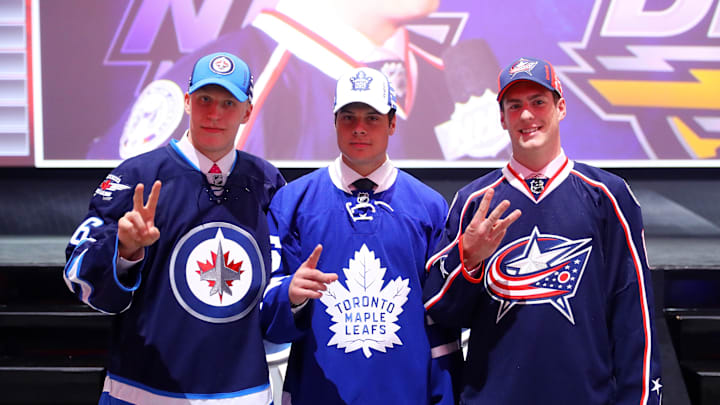Tenth Pick
At 179th overall, the Leafs went again with size, drafting big-bodied London Knights’ defender Nicolas Mattinen.
However, he had shown some offensive potential with 10 points in 39 games in his rookie OHL year. The following year would see some regression in that aspect but in the next two years split between the Flint Firebirds, Hamilton Bulldogs, and Oshawa Generals he would breakout offensively. He would play 132 games scoring 26 goals and 91 points.
Despite his progression, the Leafs would not sign Mattinen and his rights would expire, setting the stage for him to join the Canadian Usports University of Ottawa.
In his third and final year, Mattinen would win USports MVP, Defenceman of the year, and be named an all-Canadian first team all-star. He would then play eight games with the Laval Rockets of the AHL before heading to the Latvian ICEHL and Germany’s DEL.
At the conclusion of this past season, it was announced that the Leafs had signed Mattinen to a one-year, two-way league minimum contract for the 2024-25 season.
Eleventh Pick
At 182nd overall and with their final pick of the draft, the Leafs selected their fifth overage and third Russian player, Nikolai Chebykin. Like many players in this class, the first noticeable attribute that he possess is his size at 6-3.
Aside from this, he played a powerforward game using his size and decent skating to his advantage. His 35 points in 39 games in the Russian MHL did not jump off the page but he seemed to have tools to translate his game well.
Despite coming over for a few development camps, Chebykin never left Russia, working his way up from the MHL to the second-tier VHL and now to the KHL.
